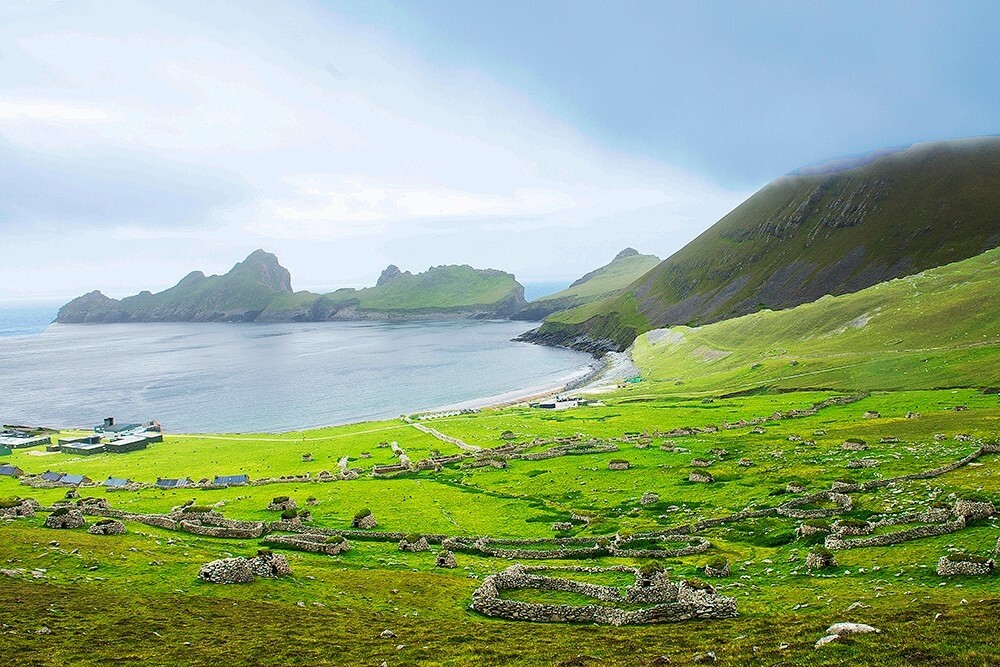
The Impact of Climate Change on St Kilda and Its Heritage
Created by Dianze Zhang, School of Computer Science, University of St Andrews
Welcome to our project website!
We are committed to exploring and demonstrating the impact of climate change on St Kilda’s heritage. Here you can learn more about St Kilda, the impact of climate change and the projects we have created to protect this precious heritage by using Unreal Editor for Fortnite (UEFN). I hope you will enjoy the beauty of St Kilda and realize the importance of protecting our natural and cultural heritage.
Thank you for visiting and enjoy your visit!
Let’s Start Our Journey!
Introduction of St Kilda
St Kilda is one of the most remote places in the UK, which located about 64 kilometers west of the Outer Hebrides in western Scotland. This remote archipelago is made up of four main islands: Hirta, Dun, Soay and Boreray, among all Hirta is the largest and most dominant island. St Kilda is known for its unique natural landscape and historic sites, and was listed as a World Cultural and Natural Heritage Site by UNESCO in 1986 [1]. This honor recognizes not only its unique natural beauty and rich wildlife, but also its significant historical and cultural values.
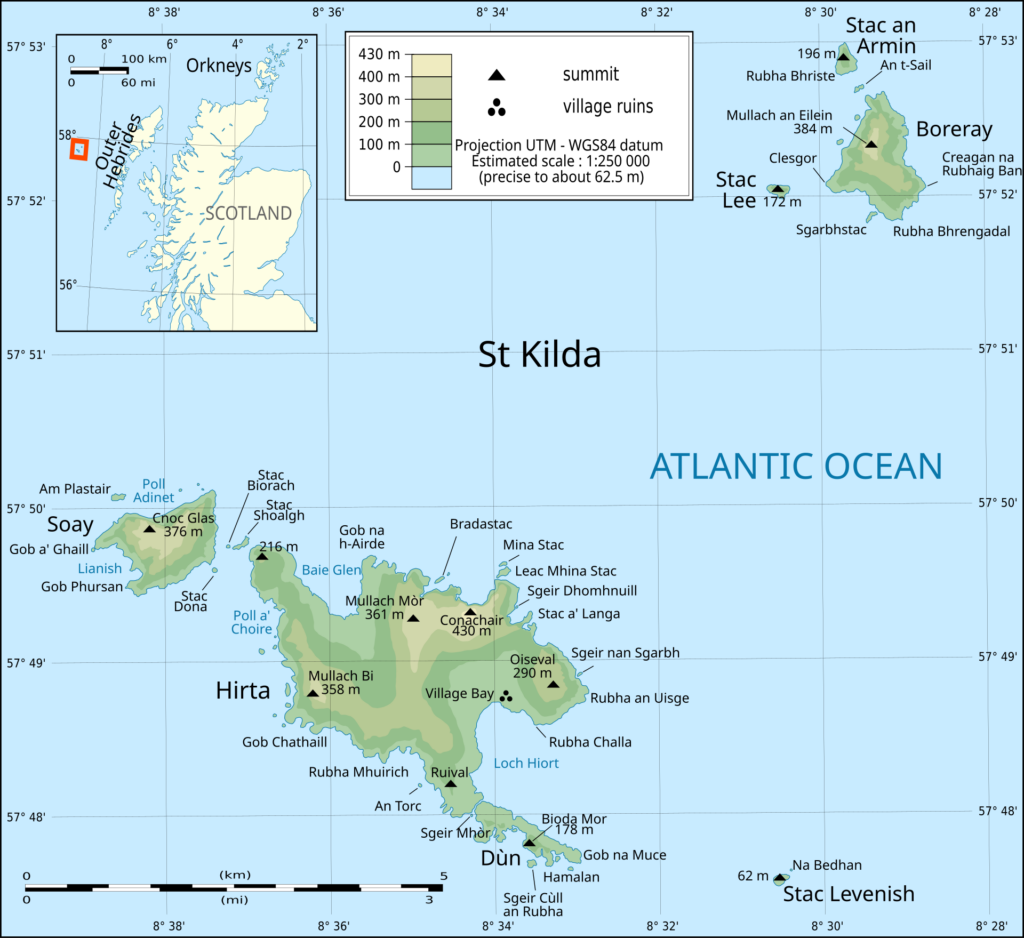
St Kilda Gallery



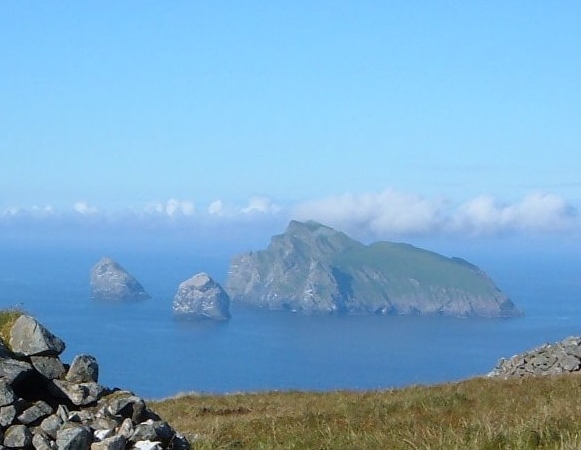
HISTORY
Cultural Heritage of St Kilda
The cultural heritages of St Kilda are mainly located in village bay, which is the core of St Kilda Islands. It is located in the south of Hirta Island, where residents mainly lived in the past. The ruins of ancient villages are best known for their traditional “Blackhouses”, which is stone house with heavy double walls. The outer walls are made of piled stones and inner walls are filled with turf. These houses are strong and warm enough to withstand the island’s harsh weather. In addition, the village is dotted with a large number of “Cleits”, which are small storage houses made of dry stone for storing food and fuel. The unique design of “Cleits” has good ventilation function, which ensures that stored items do not rot [2]. These can reflect the daily life and survival wisdom of the residents of St Kilda.
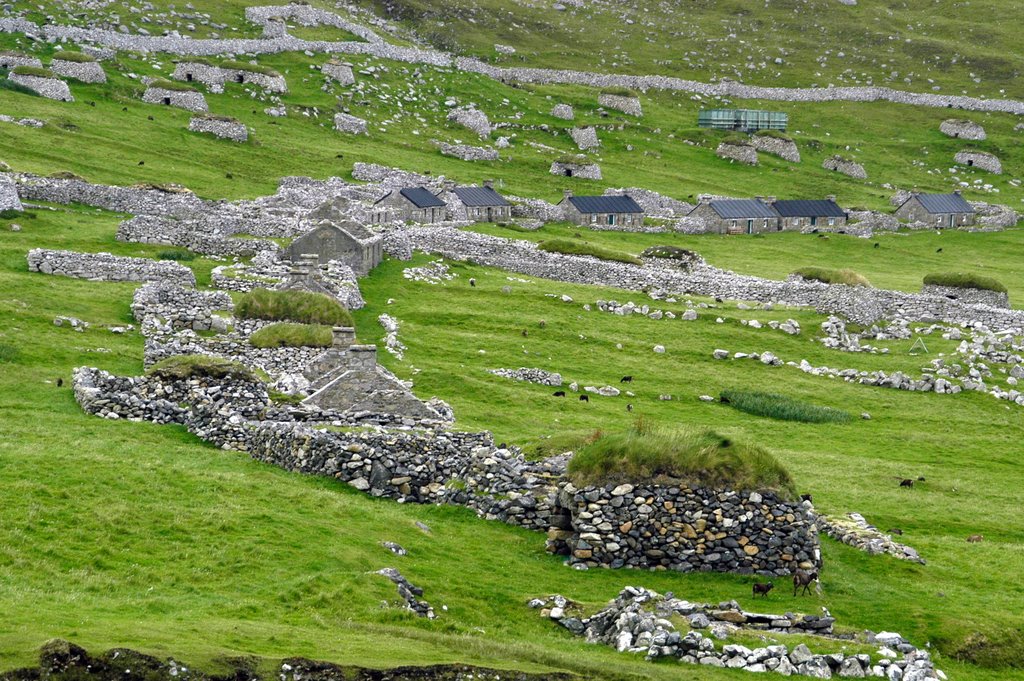
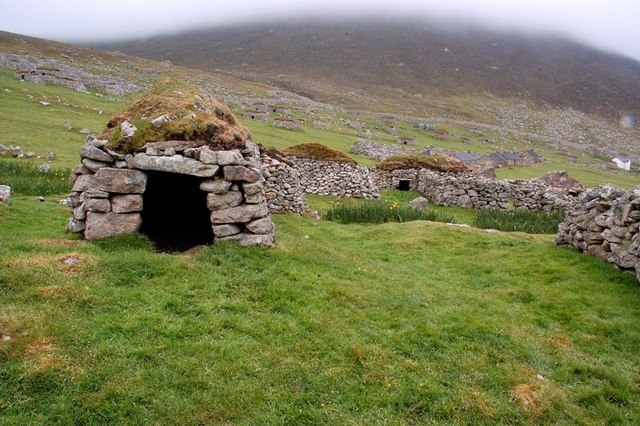

St Kilda also played a key role in the war. During the First World War, the British government built signal stations and batteries here to monitor and defend against maritime activity in the Atlantic Ocean. During the Second World War, St Kilda was again used as a military base, with radar stations and air raid shelters for surveillance and air defence. During the period of Cold War between the United States and the Soviet Union, the radar station on the island became part of the British Northern Cordon Line, further strengthening the defensive facilities [3].
ECOSYSTEM
Natural Heritage of St Kilda
St Kilda is one of the most important seabird habitats in Europe and has the largest Northern Gannet breeding population in the world. It also has other important birds include Atlantic Puffin, Leach’s Storm-Petrel, Great Skua, and Black-legged Kittiwake [1].
Apart from that, the island is home to the unique Soay sheep, which is a native ancient breed that has been virtually unaffected by outside influences
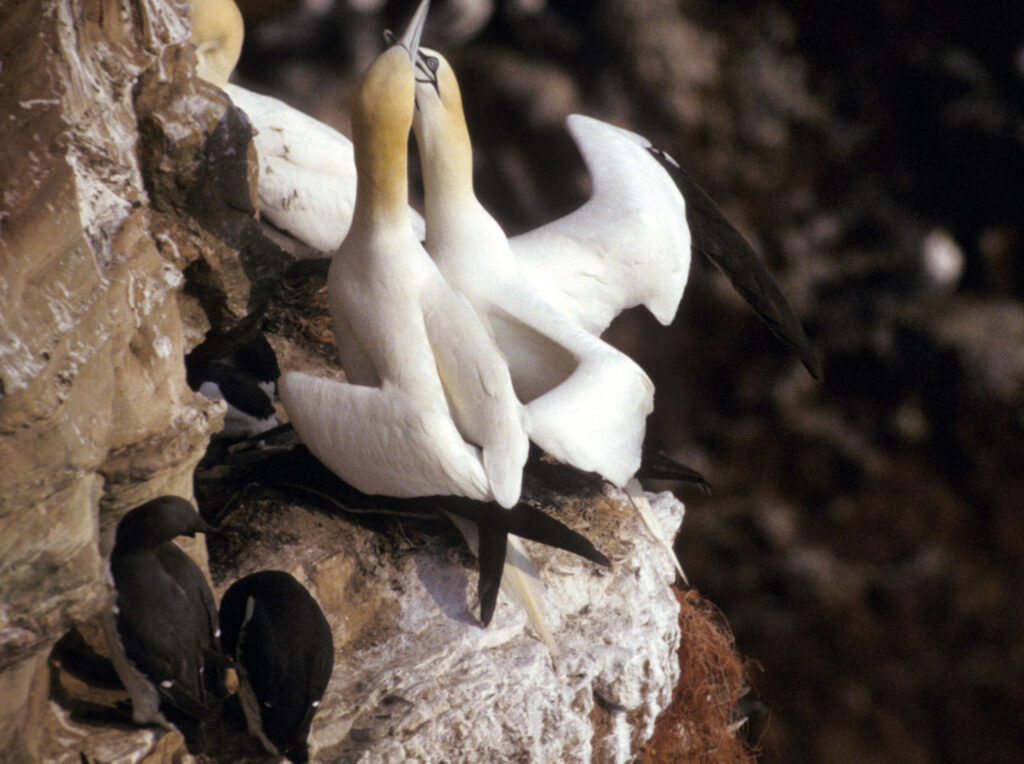
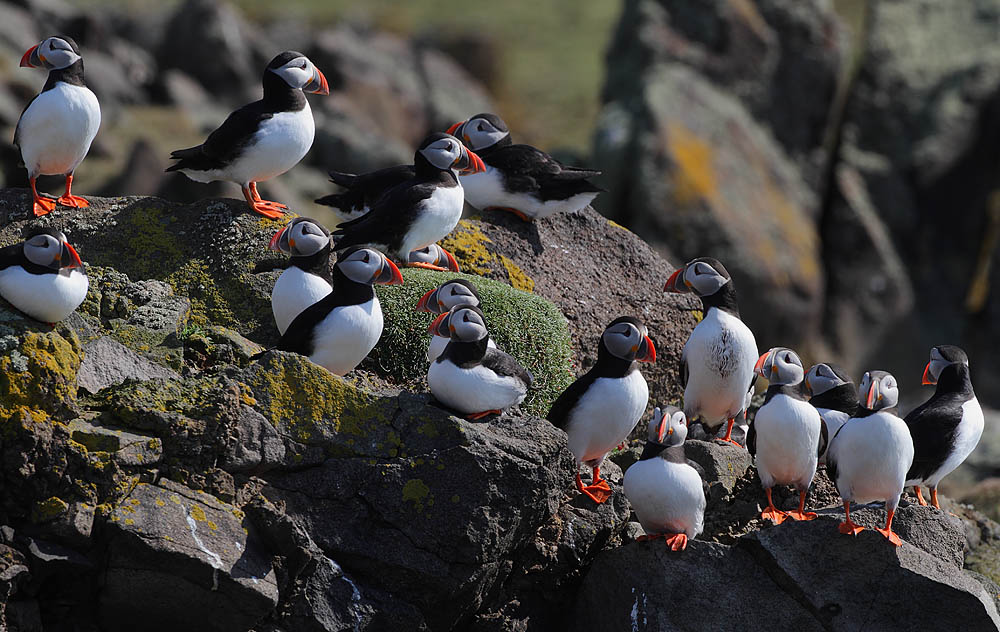
More Information about St Kilda Heritage
St Kilda geomorphic model:
Atlantic Puffin Model:
Northern Gannet Model:
Soay Sheep :
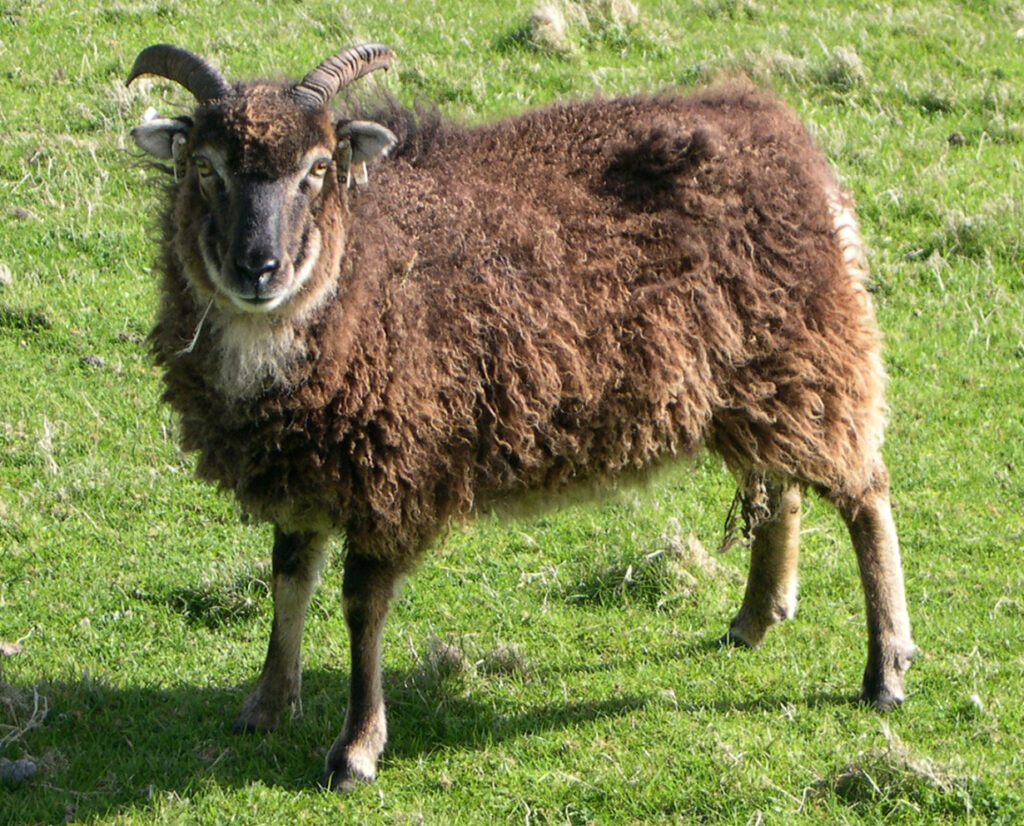
GET IN TOUCH
St Kilda Official Website
St Kilda Street View
Impact of Climate Change on
St Kilda
Climate change refers to the phenomenon of significant changes in climate patterns over a longer time scale. The main causes include greenhouse gas emissions from human activities, such as carbon dioxide, methane and nitrous oxide. These gases add to the greenhouse effect in the atmosphere, causing global temperatures to rise, sea levels to rise, and extreme weather events to occur frequently, affecting ecosystems and human societies. Climate change has become a major global environmental challenge that needs to be addressed through measures to mitigate greenhouse gas emissions and adapt to the impacts of climate change [4].
It mainly includes:
Global Warming↗
The global average temperature is rising, mainly due to the increase in greenhouse gases emission.
Increased Extreme Weather Events ↗
Heat waves, heavy rains, droughts and hurricanes have increased in frequency and intensity.
Ocean Acidification↗
The ocean absorbs most of the heat, causing ocean temperatures to rise and acidify.
Impact on biodiversity:
According to a survey by the National Trust for Scotland (NTS), the number of seabirds on the St Kilda Islands has plummeted. The latest research revealed a 61% decline in St Kilda’s seabird population. The kittiwake population has fallen by 84%, while Arctic puffins, guillemot and razorbill populations have also declined significantly [5].
There are more than 45,000 fewer Arctic puffins on the St Kilda than there were 24 years ago, with just 20,712 remaining. And the number of nests of Arctic puffins is a third of what it was 24 years ago. In addition, the numbers of guillemots and razorbills have declined by more than 35% [5].
Ellie Owen, senior seabird officer of the NTS, said climate change is the main reason of the decline [5].
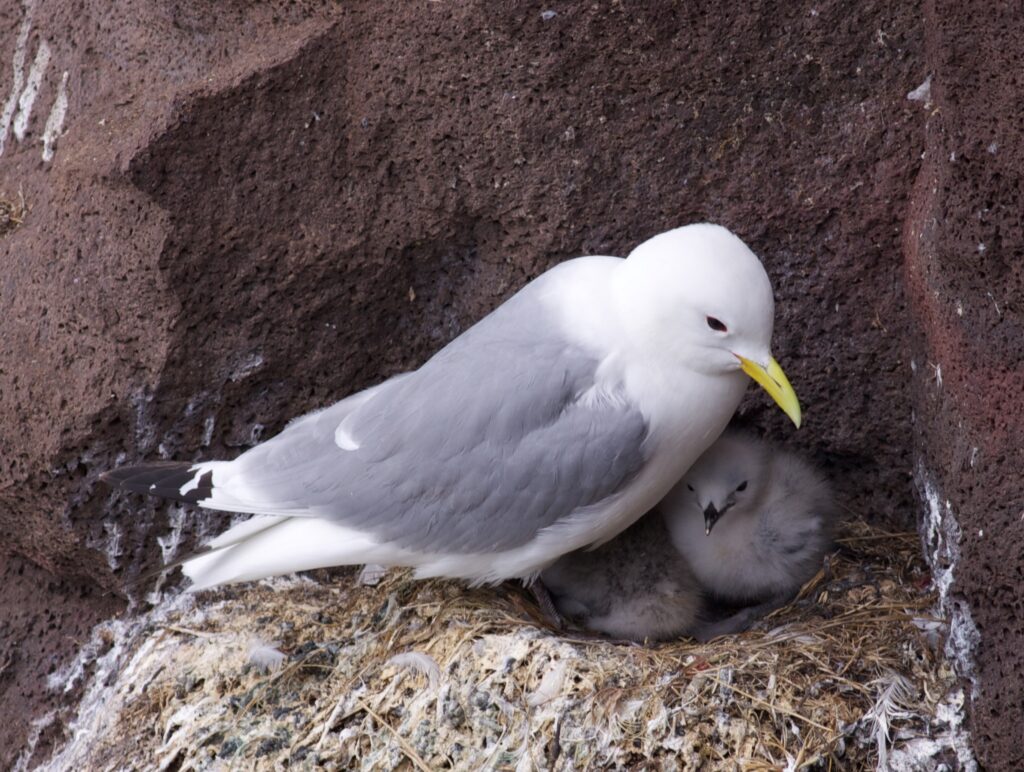
Impact on relics:
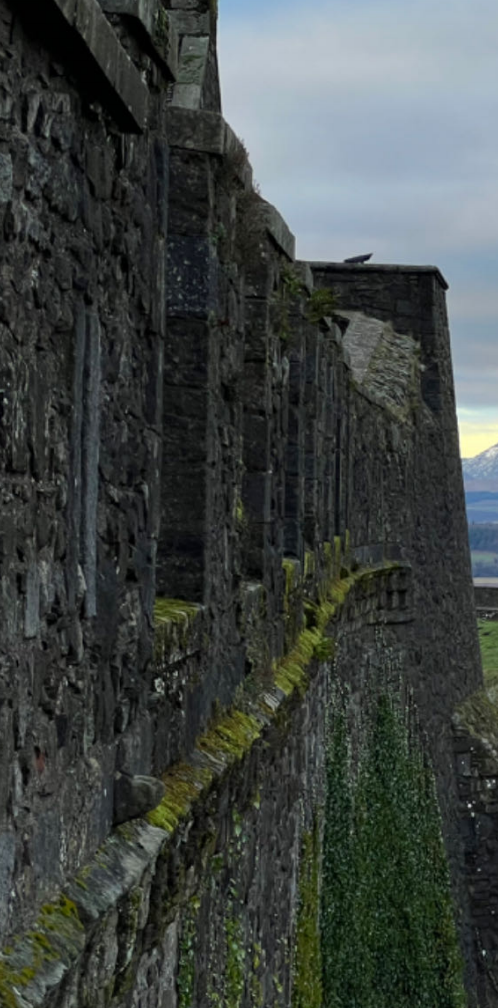
Rising sea levels
Rising sea levels pose a serious threat to coastal sites. In addition to St Kilda’s village bay, many ancient cities and sites built in coastal areas, such as Venice and Alexandria, are at risk of being flooded and eroded.
Extreme weather events
Climate change has led to more extreme weather events, such as storms, floods, droughts and heat waves. These extreme weather events caused direct damage to the physical structure of the site.
Temperature change
Rising global temperatures have led to accelerated aging and deterioration of materials at many sites. For example, thermal expansion and contraction caused by temperature changes can cause cracks and breakage in stone, bricks and other building materials [6].
Humidity changes
Too much humidity can cause rot and mildew in organic materials such as wood, paper, and textiles, while too little humidity can make these materials brittle and cracking. In addition, excessive humidity can lead to the growth of microorganisms on the building materials and accelerate the corrosion of the relics [6].
Impact on landform:
With the continuous rise of sea level, the erosion of sea cliffs and sea stacks by waves is also increasing. St Kilda has one of the highest sea cliffs in the UK, the Conachair Cliff, which is 430 metres high. These sea cliffs face more frequent and intense wave impact, which can lead to the gradual weakening and collapse of rock structures.
Extreme weather events exacerbate the erosion of sea cliffs and stacks. For example, St Kilda’s famous sea stacks, such as Stac Lee (172m) and Stac an Armin (196m), are under greater erosion pressure due to the frequent occurrence of storms. These natural wonders may gradually disappear or collapse due to continuous wind and sea erosion.
At the same time, the chemical erosion of limestone and other carbonate rocks by ocean acidification has increased, which has intensified the weathering and damage of sea cliffs and sea stacks.

St Kilda on Fortnite!

In this project, I used UEFN to create a St Kilda map with high restoration. Users can play on this map through Fortnite.
In this map, I added a lot of interactive elements, users can read the introduction of St Kilda and heritages, and users can quickly shuttle through various islands through teleportation.
If you are interested in creating map, you can also open the map on UEFN and create your ideal St Kilda based on it !

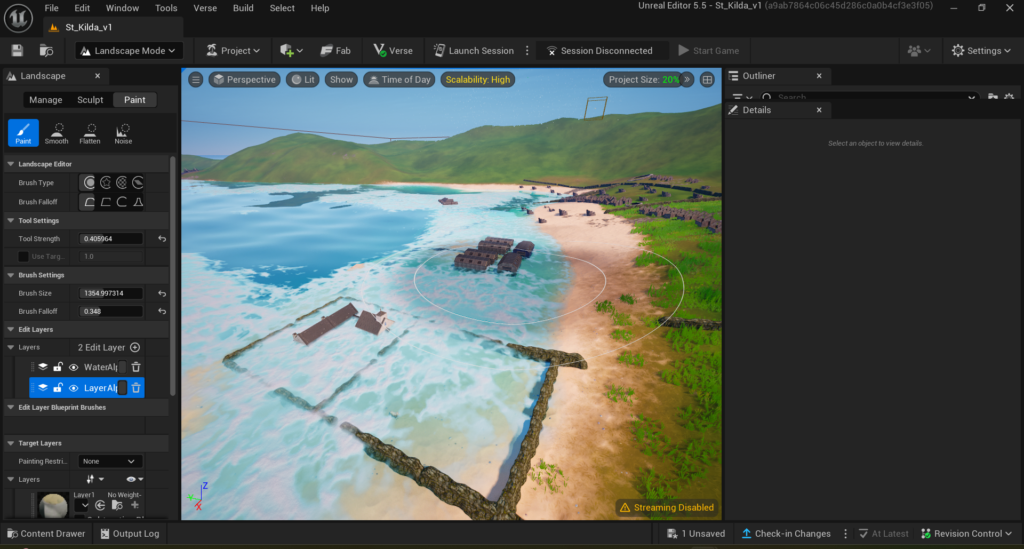
Let‘s walk into
St Kilda!
Map Code:
St Kilda Map: 8972-2452-3647
Erosion Map of St Kilda: 1175-5844-2759
Rising Sea Level Map 1: 8297-9719-8804
Rising Sea Level Map 2: 8456-3210-4702
Rising Sea Level Map 3: 6971-8830-6726
DO SOMETHING TO PROTECT OUR HERITAGES !
Image Source
“Saint Kilda archipelago topographic map” by Eric Gaba, licensed under CC BY-SA 4.0. Image source: https://commons.wikimedia.org/wiki/File:Saint_Kilda_archipelago_topographic_map-en.svg
“Saint Kilda 20090611 Hirta – Village Bay overview” by Otter is licensed under Creative Commons Attribution-Share Alike 3.0 Unported. Image source: https://commons.wikimedia.org/wiki/File:Saint_Kilda_20090611_Hirta_-_Village_Bay_overview.jpg
“Cleit above Village Bay” by Bob Jones is licensed under Creative Commons Attribution-Share Alike 2.0 Generic. Image source: https://commons.wikimedia.org/wiki/File:Cleit_above_Village_Bay.jpg
“Village, Hirta, St Kilda” by Hugh Miller is licensed under Creative Commons Attribution-Share Alike 4.0 International. Image source: https://commons.wikimedia.org/wiki/File:Village,_Hirta,_St_Kilda.jpg
“Boreray and the Stacs” by Stephen Hodges is licensed under Creative Commons Attribution-Share Alike 2.0 Generic. Image source: https://commons.wikimedia.org/wiki/File:Boreray_and_the_Stacs.jpg
“A Cleit On St Kilda” by Mary and Angus Hogg is licensed under Creative Commons Attribution-Share Alike 2.0 Generic. Image source: https://commons.wikimedia.org/wiki/File:A_Cleit_On_St_Kilda_-_geograph.org.uk_-_1379478.jpg
“Dun, St Kilda” by Bob Jones is licensed under Creative Commons Attribution-Share Alike 2.0 Generic. Image source: https://commons.wikimedia.org/wiki/File:Dun,_St_Kilda.jpg
“Gun Dùn St Kilda” by Gajtalbot is licensed under Creative Commons Attribution-Share Alike 2.0 Generic. Image source: https://commons.wikimedia.org/wiki/File:Gun_D%C3%B9n_St_Kilda.jpg
“Morus bassanus 21” by Michael Haferkamp is licensed under Creative Commons Attribution-Share Alike 2.5 Generic. Image source: https://commons.wikimedia.org/wiki/File:Morus_bassanus_21.jpg
“Puffin gang” by Steve Garvie is licensed under Creative Commons Attribution 2.0 Generic. Image source: https://en.wikipedia.org/wiki/Atlantic_puffin#/media/File:Flickr_-_Rainbirder_-_Puffin_gang.jpg
“Hirta, seen from Boreray” by Richard Webb is licensed under Creative Commons Attribution-Share Alike 2.0 Generic. Image source: https://commons.wikimedia.org/wiki/File:Hirta,_seen_from_Boreray_-_geograph.org.uk_-_1440431.jpg
“Soay ewe” by Tomek Augustyn is licensed under Creative Commons Attribution-Share Alike 3.0 Unported. Image source: https://commons.wikimedia.org/wiki/File:Soay_ewe.jpg
“St Kilda, United Kingdom” by Ko Hon Chiu Vincent is licensed under Creative Commons Attribution-Share Alike 3.0 Unported. Image source: https://whc.unesco.org/en/list/387/gallery/
“Kittiwake with young chick” by Boaworm is licensed under Creative Commons Attribution-Share Alike 3.0 Unported. Image source: https://commons.wikimedia.org/wiki/File:Kittiwake_with_young_chick.jpg
References
Brain, S., Day, J. C., Jones, R. H., Hyslop, E., Wright, K. A., Davies, M. H., & Heron, S. F. (2024). Climate Vulnerability Index Assessment for St Kilda. Historic Environment Scotland. Retrieved from https://www.historicenvironment.scot/archives-and-research/publications/publication/?publicationId=32a43674-b245-45c4-9e2e-b16b00a54620
Geddes, G., & Watterson, A. (2013). ‘A Prodigious Number of Little Cells’–Cleitean and the St Kilda World Heritage Site. Architectural Heritage, Retrieved from https://www.euppublishing.com/doi/full/10.3366/arch.2013.0048
National Trust for Scotland. (n.d.). Trust places during wartime. Retrieved July 29, 2024, from https://www.nts.org.uk/stories/trust-places-during-wartime
IPCC. (2021). Climate Change 2021: The Physical Science Basis. Contribution of Working Group I to the Sixth Assessment Report of the Intergovernmental Panel on Climate Change. Cambridge University Press. https://www.ipcc.ch/report/ar6/wg1/
BBC News. (2023, August 29). Kittiwake numbers are down by 84%. BBC. https://www.bbc.co.uk/news/uk-scotland-highlands-islands-66638664
Sesana, E., Gagnon, A. S., Ciantelli, C., Cassar, J., & Hughes, J. J. (2021). Climate change impacts on cultural heritage: A literature review. Wiley Interdisciplinary Reviews: Climate Change, 12(4), e710.